Ceremony
On a gorgeous, albeit cold, November morning many Italian Americans, including a woman in her 90s who had attended the dedication of the original statue in the 1930s, a few Italian Italians, several Italophiles, and representatives from City Hall and Cincinnati Parks, some of Italian descent, channel 5, the Cincinnati Enquirer, and other press, gathered at Eden Park for the unveiling of the new Lupa statue with the original twin brothers Romulus and Remus on a marble base with gilded lettering announcing the gift of it from the Governor of Rome to the City of Cincinnati, the namesake of the Roman general Cincinnatus, in 1931 (not in place until 1932 as the “wrong” Lupa (a baby one) was initially sent). The governor in question was Prince Francesco Boncompagni Ludovisi (Governor 1928-1935) who was sacked by fascist leader Mussolini, landed on Hitler’s “most-wanted” list, and aided Italian partisans and allies, e.g., welcoming the British Red Cross to operate from his palace.
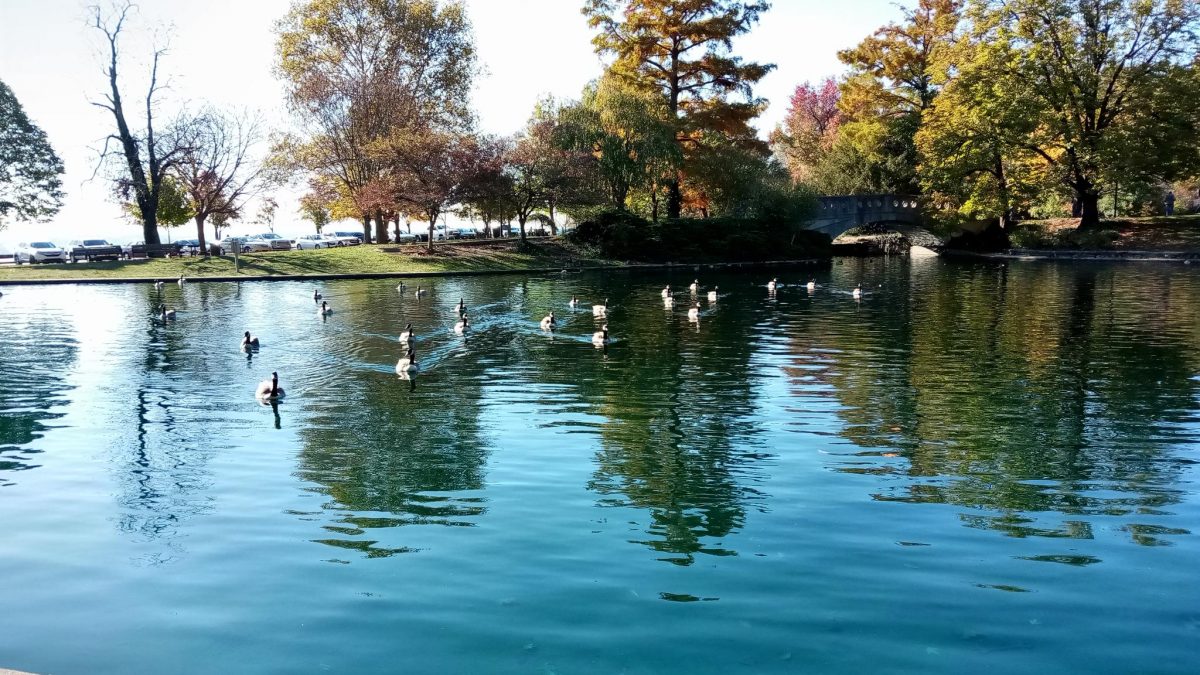
One of the Twin Lakes with its lovely Canada Geese visitors.
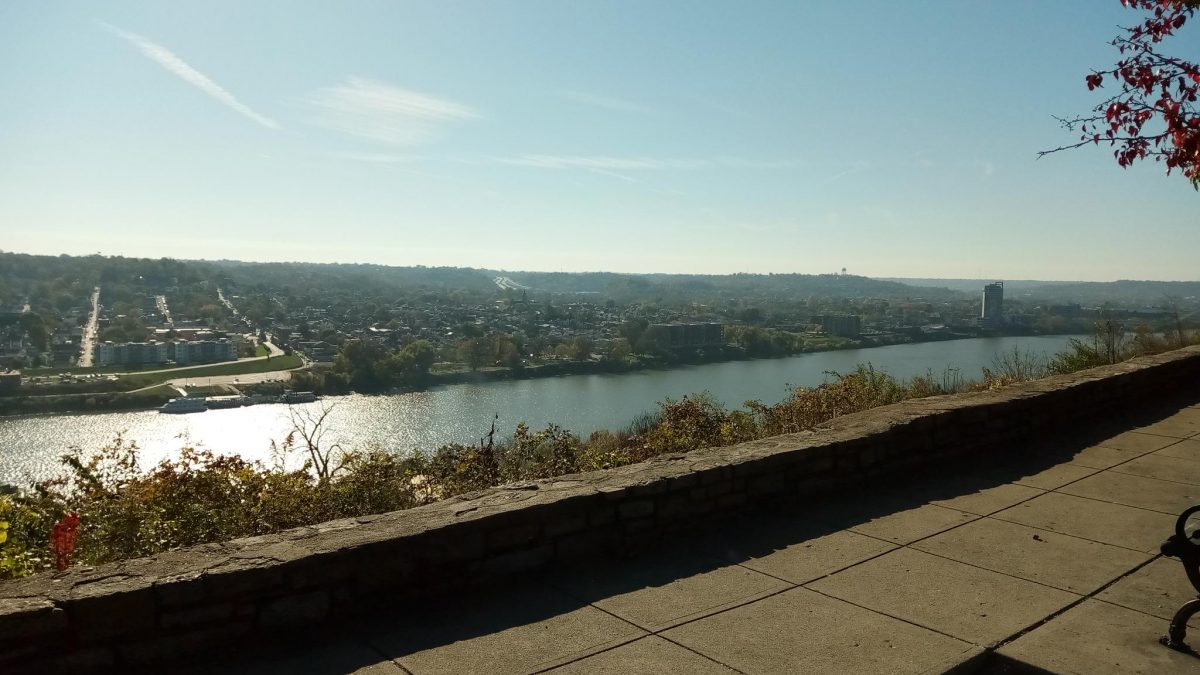
View from Eden Park towards Kentucky and the Ohio River.
It was a solemn event because of the horrifying theft and vandalism that had necessitated the reconstruction but also festive as it celebrated Italian heritage and the “return” of a Cincinnati icon. Despite the sad loss of the original, it is good to know that she was incorporated into the new replica in the form of her paws which were melted down and mixed in with the bronze of the new Lupa.
We had brought 40 flyers announcing the Lupa exhibition in the Burnam Library. We should have brought 200! We had not anticipated that the ceremony would attract such a crowd. Thankfully, an announcement was made from the podium and in the Cincinnati Enquirer. We were treated to home-baked Italian pastries, coffee and hot chocolate (made the Italian way, heavy on the chocolate), and pizza while Italian songs from Bella Ciao to That’s Amore were blaring from loudspeakers. A number of dignitaries from City Hall, Cincinnati Parks, the “United Italian Society of Greater Cincinnati,” and above all the “Cincinnati Order Sons and Daughters of Italy in America” were in attendance and gave speeches. Joe Mastruserio, its president, recounted a version of the story of the Lupa and twins and the founding of Rome, but above all spoke of the history of the Eden Park statue and of Boncompagni Ludovisi, the Governor of Rome at the time of the original gift, and a gruesome story about another Remus, a German-American bootlegger in Cincinnati by the name of George Remus who shot his wife in Eden Park, essentially on the spot where the Lupa statue now stands (the Roman Remus had also been murdered by a family member, his own brother). True to the Cincinnati obsession with ghosts, naturally, the ghost of George’s wife Imogene is said to haunt the gazebo not far from the statue. George Remus, by the way, was acquitted thanks to a “temporary insanity” defense. The murderer of the Roman Remus, Romulus, founded Rome and was made king. Justice has apparently been a relative concept for a long time.
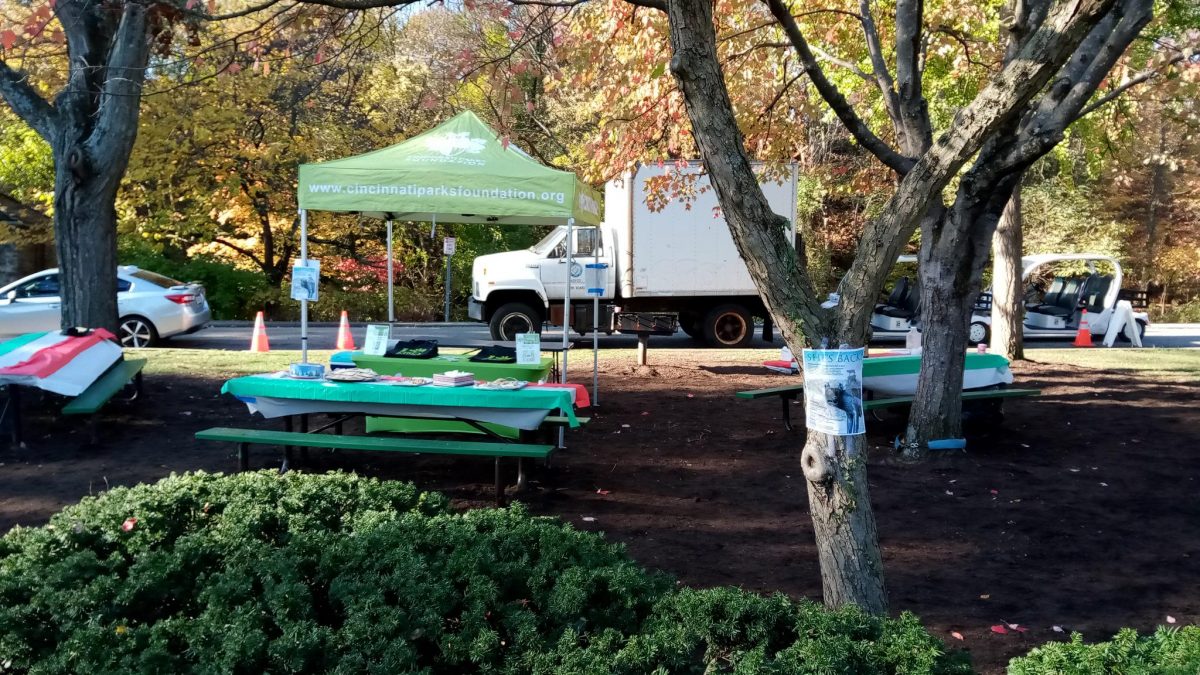
Already at 8:00 in the morning organizers and helpers were in place.
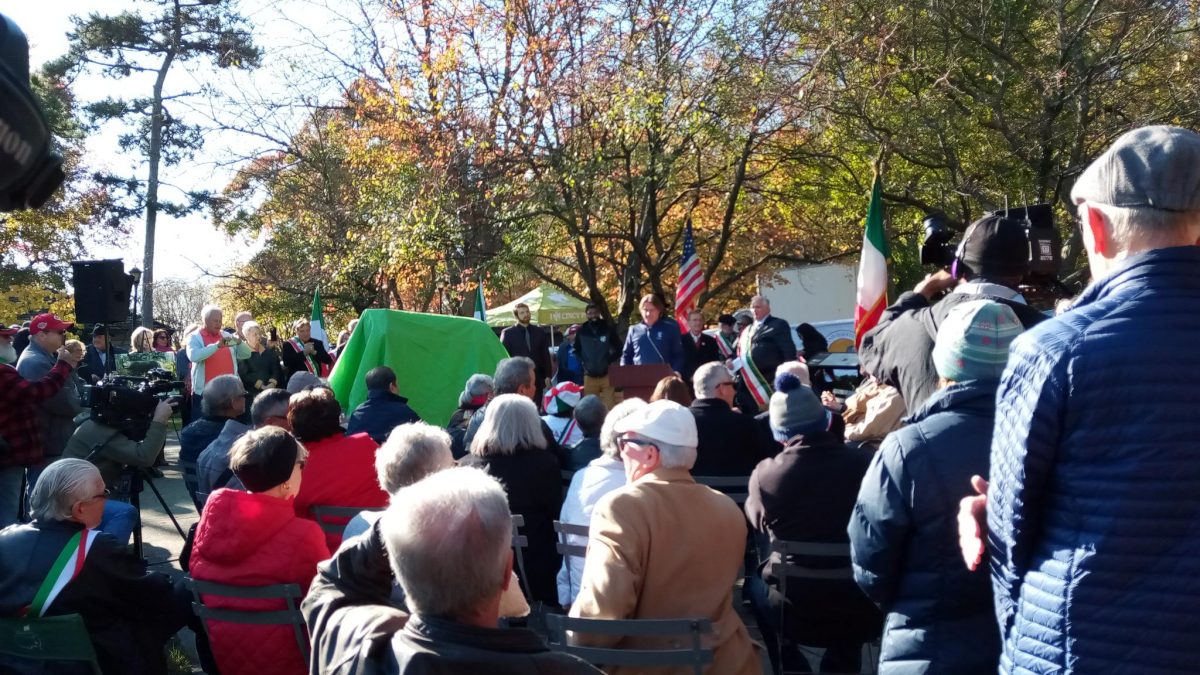
The air was full of anticipation before the unveiling.
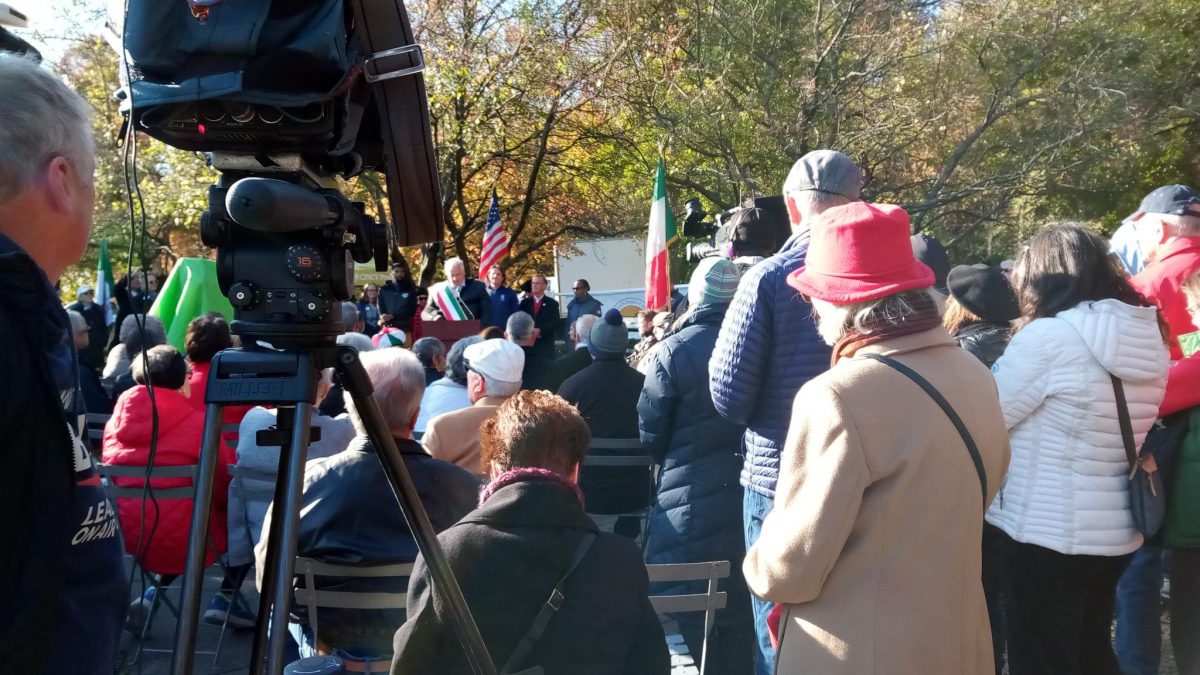
Several TV and press outlets documented the event.
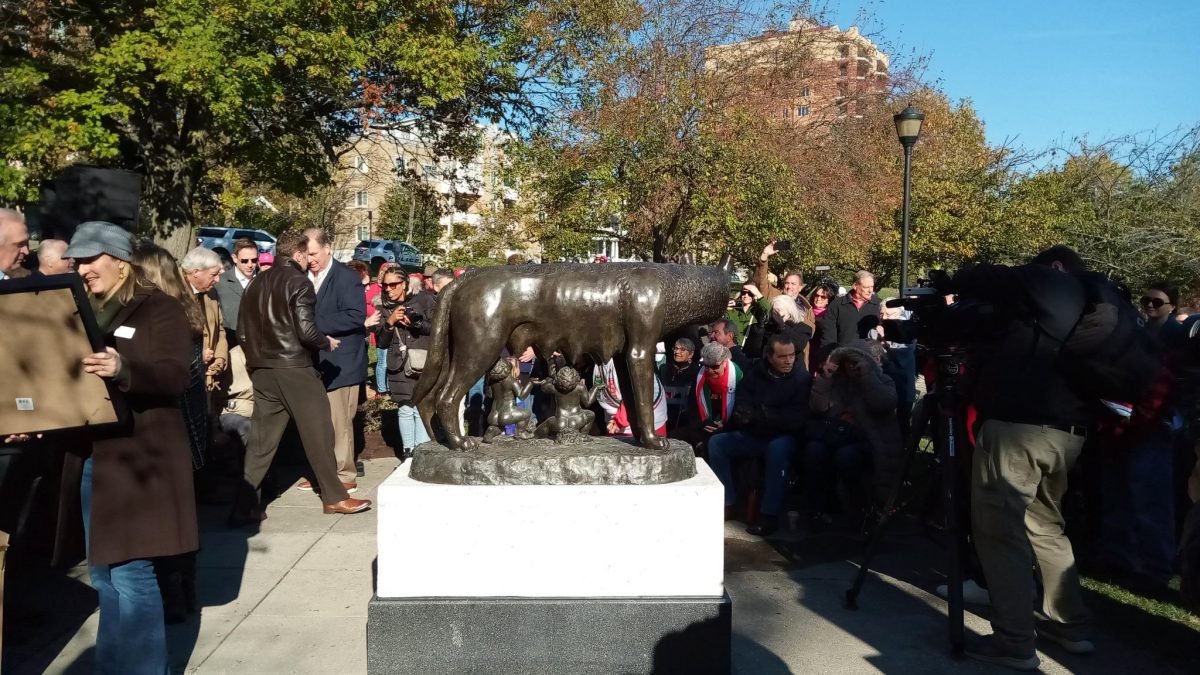
Finding a spot to take photos was not easy.
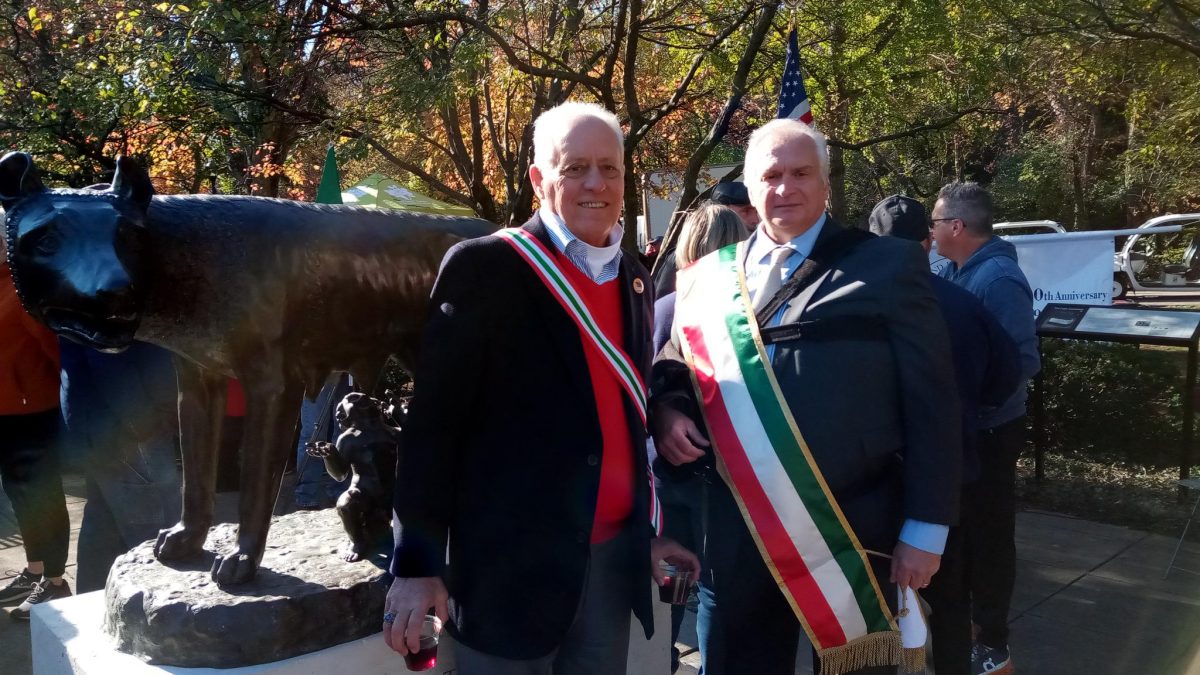
The new She-Wolf with Joe Geraci and Joe Mastruserio of the Cincinnati Order Sons and Daughters of Italy in America.
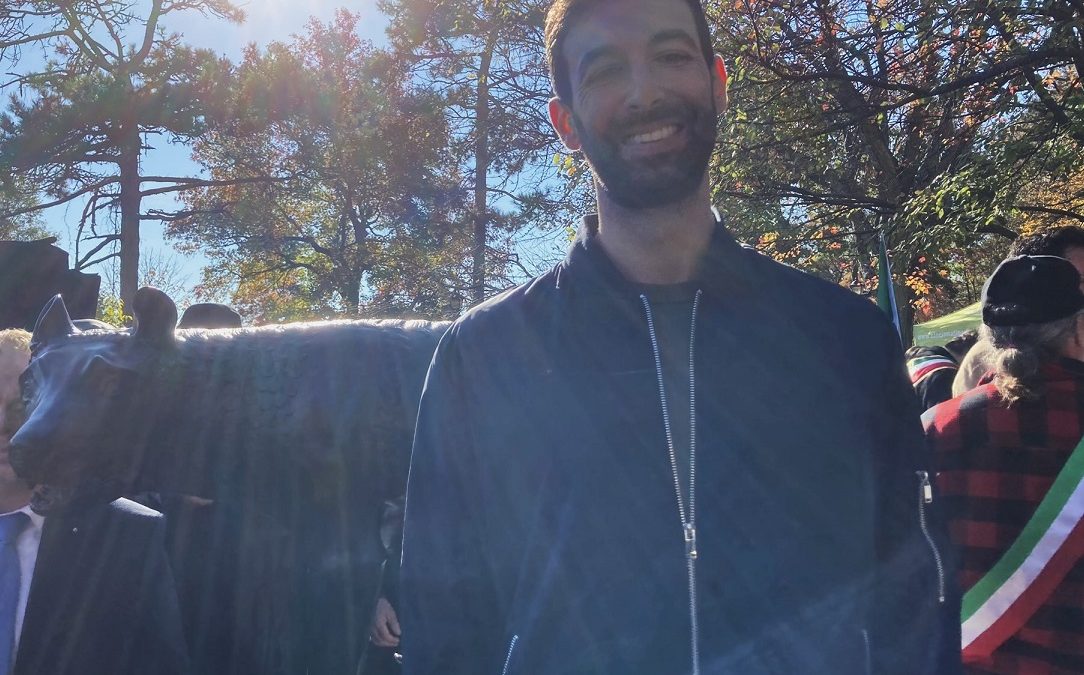
Two actual Italians :-). Lupa Capitolina (new Eden Park statue made in Italy) and Tiziano Boggio, UC Ph.D. candidate in Classics.
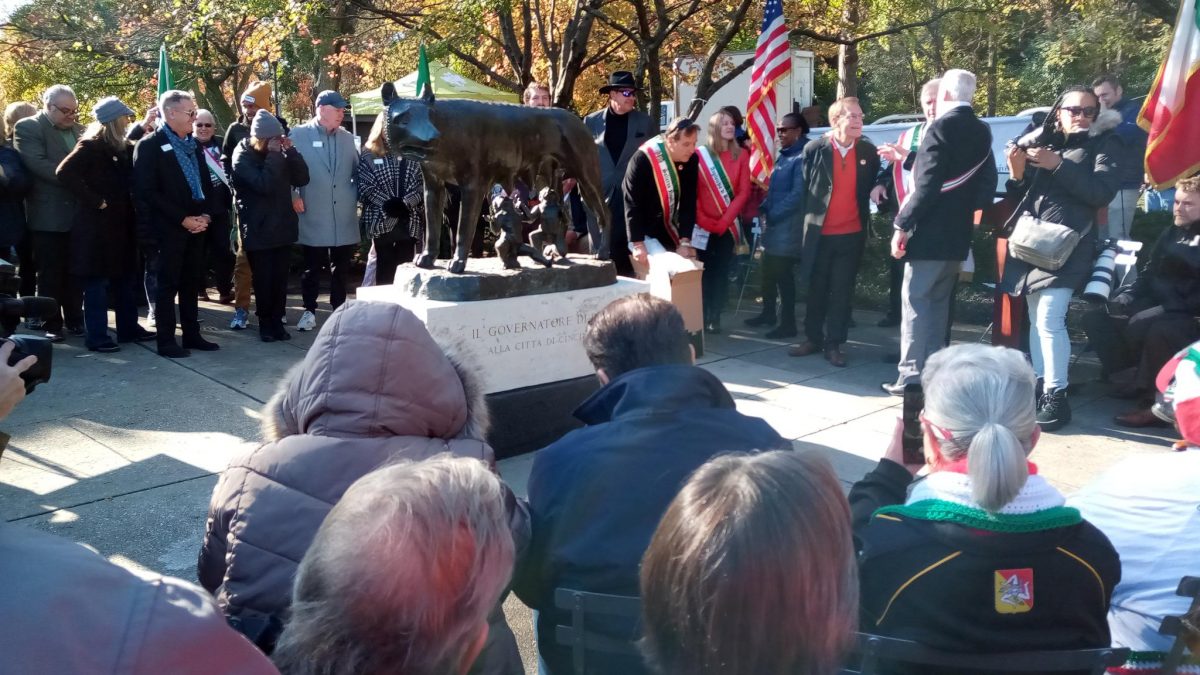
The new Eden Park She-Wolf in all her glory.
Despite the difficult parking situation around UC, dozens, mostly Italian Americans, made it to the exhibition in the Burnam Library in the afternoon. Immediately after the ceremony in Eden Park. Yo, Mike, Julie, Yo’s wife and a scholar of pre-modern Japanese performance, and I rushed to Kroger at Short Vine, realizing that we had bought too little food for the “help yourself” spread in the Blegen lobby. Even this food went quickly. The ceremony was a smashing success but so was the exhibition for which much praise was given. I have been invited to the next lodge meeting to receive a formal thank you. The president said that he is considering donating the plaster copy of the Lupa to the library but that it must be protected from touch, so he and his architect son are planning to either place it in plexiglass or on a tall pedestal or both. A huge thanks goes also to musician, graphic designer, conservator, and student worker Yo Shionoya who designed the beautiful flyer (see below), much admired by the ceremony attendants, and expertly curated the Roman coin display, gaining praise from Mike.
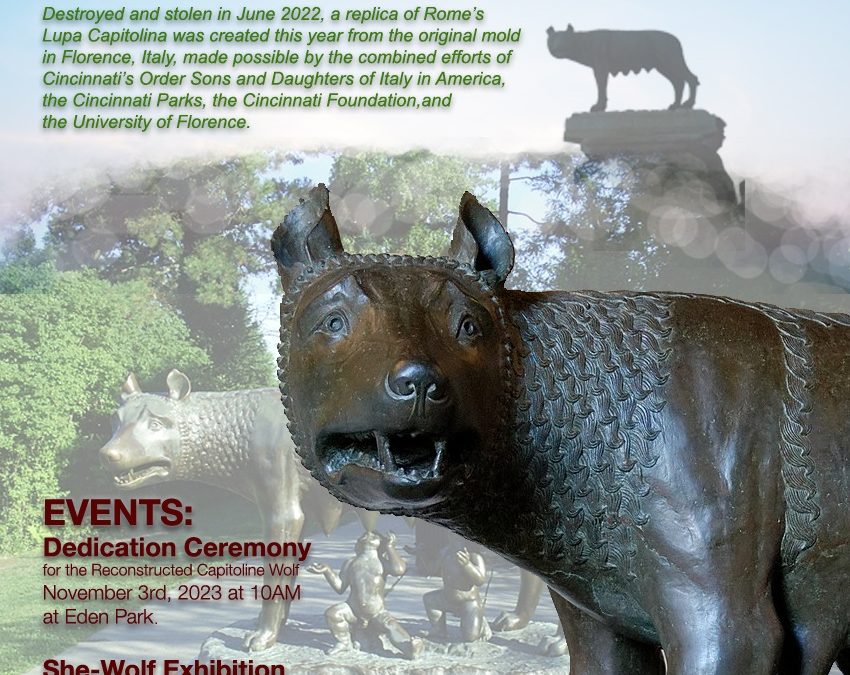
Exhibition
Included in the exhibition were eight Roman coins from the 2nd century BCE to the 4th century CE, twenty-seven 16th- and 17th-century books with passages about the She-Wolf and twins from Roman authors Livy, Virgil, Ovid, Cicero, and Propertius, and Greek authors Dionysius of Halicarnassus and Plutarch, seventeen modern books with artistic representations, a video of the making of the She-Wolf in Italy, and much more.
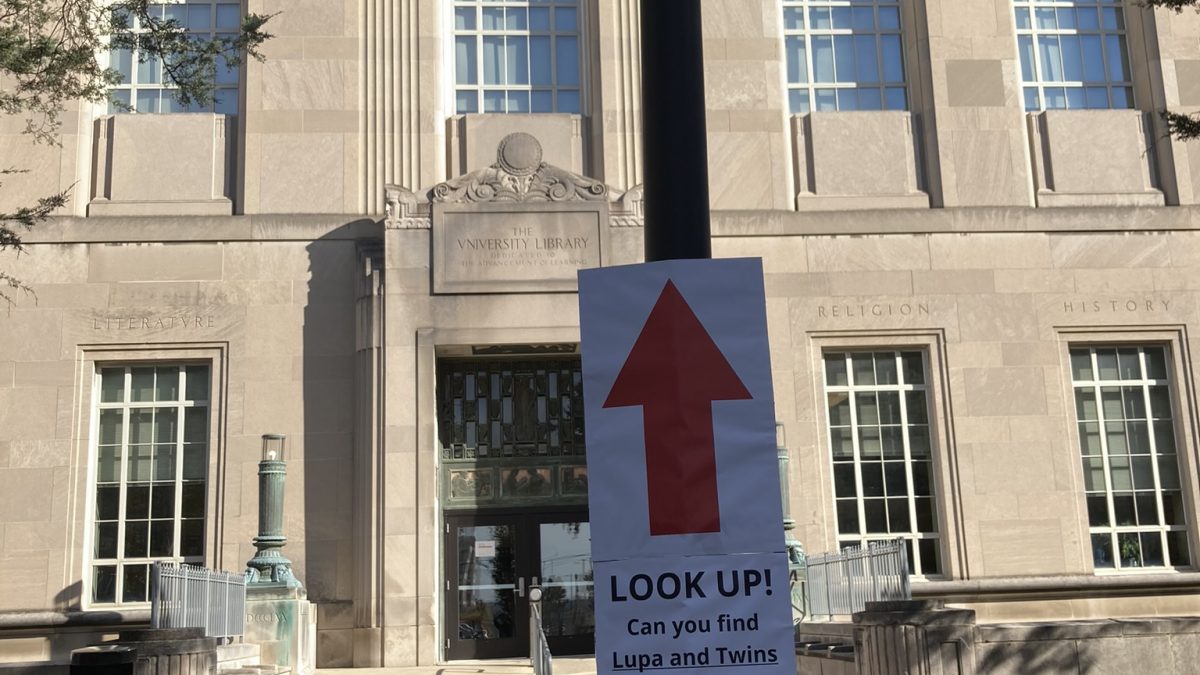
The exhibition began with a question to the visitor in front of the Blegen building to locate the Lupa and twins in relief on the façade of the building.
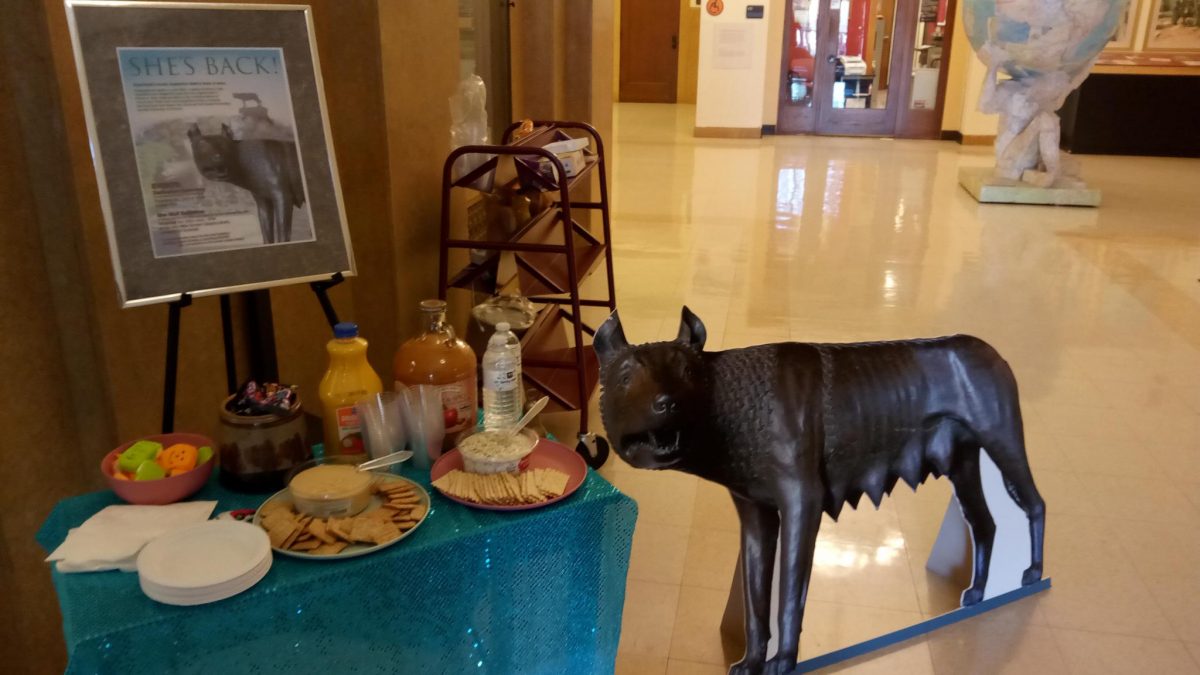
The hummus, marshmallows, and cider spreads had to be refilled repeatedly despite the pastries and pizza at the ceremony. It was a long, albeit happy, day for participants and organizers.
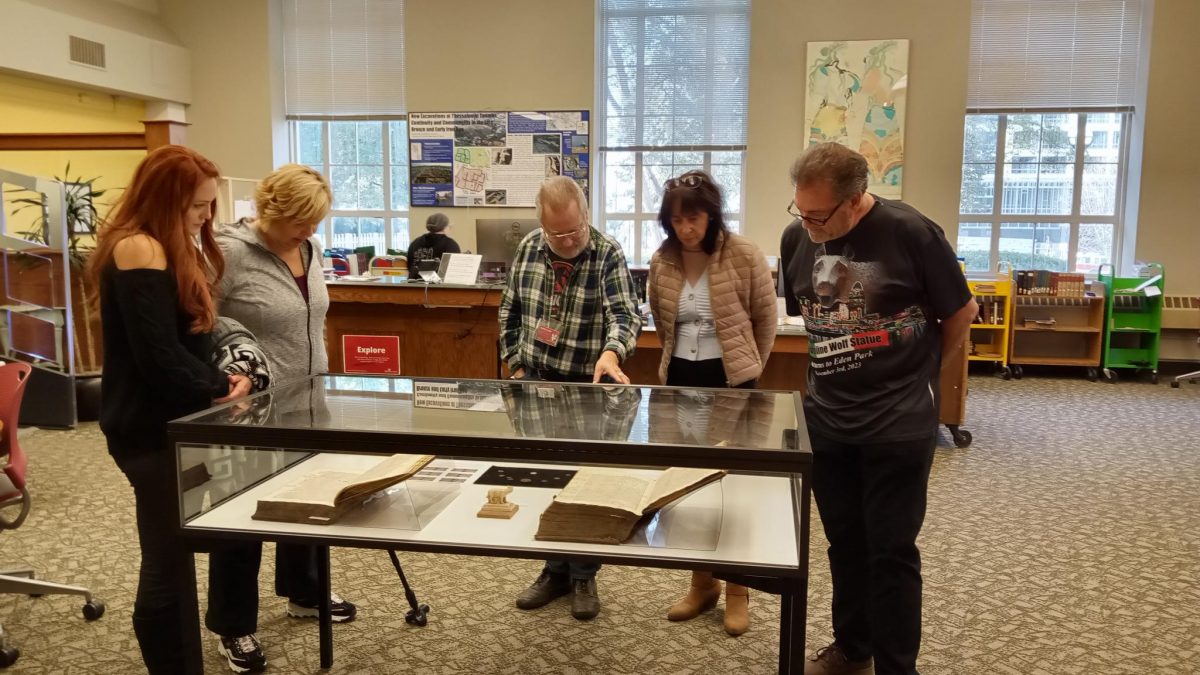
Mike Braunlin in his esse describing the exhibited eight Roman coins with the Lupa motif. He explained that the last time in antiquity the Lupa motif was minted was by the Roman Senate under the overlordship of the Ostrogoths in the late 5th/early 6th c.! Along with the coins, 1501 and 1506 Venice editions of Livy, book I, were on display.
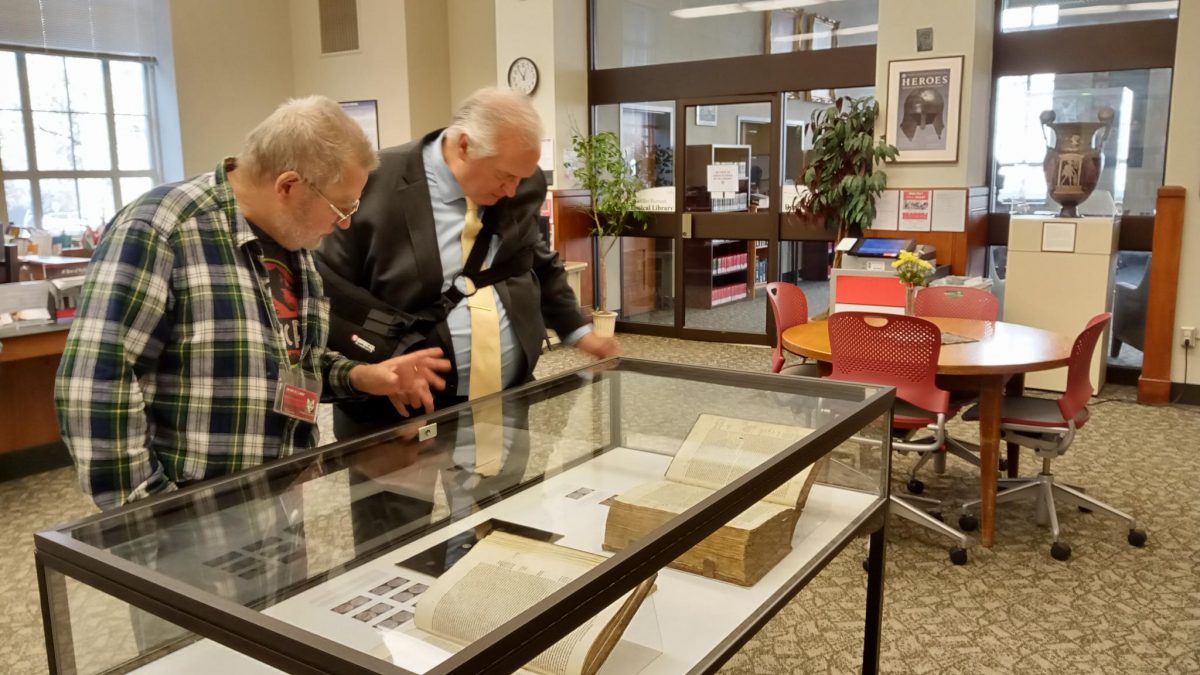
Mike with Joe Mastruserio, president of Cincinnati’s Sons…

Vergil, The Aeneid, Basel 1577; John Dryden’s English verse translation, 1697.
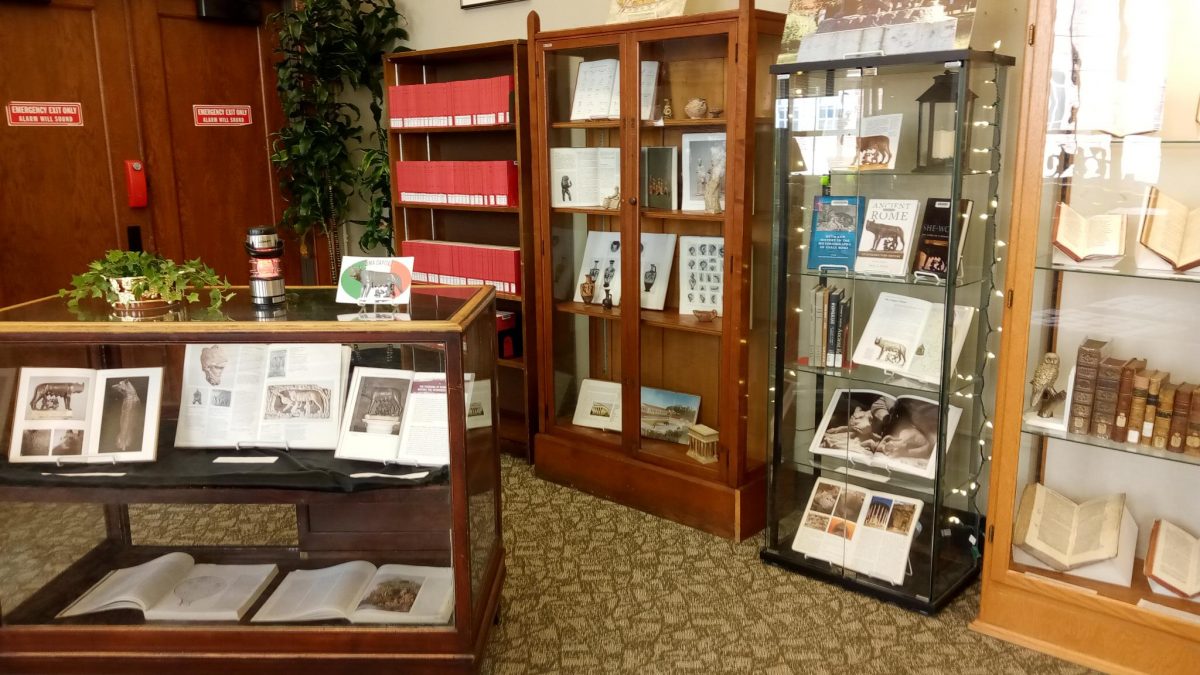
Modern books offering illustrations of the motif from different time periods and different media, including an Etruscan bronze mirror and a sculpture from Hadrian’s Villa, with illustrations of the earliest hut settlements on the Palatine Hill in Rome.
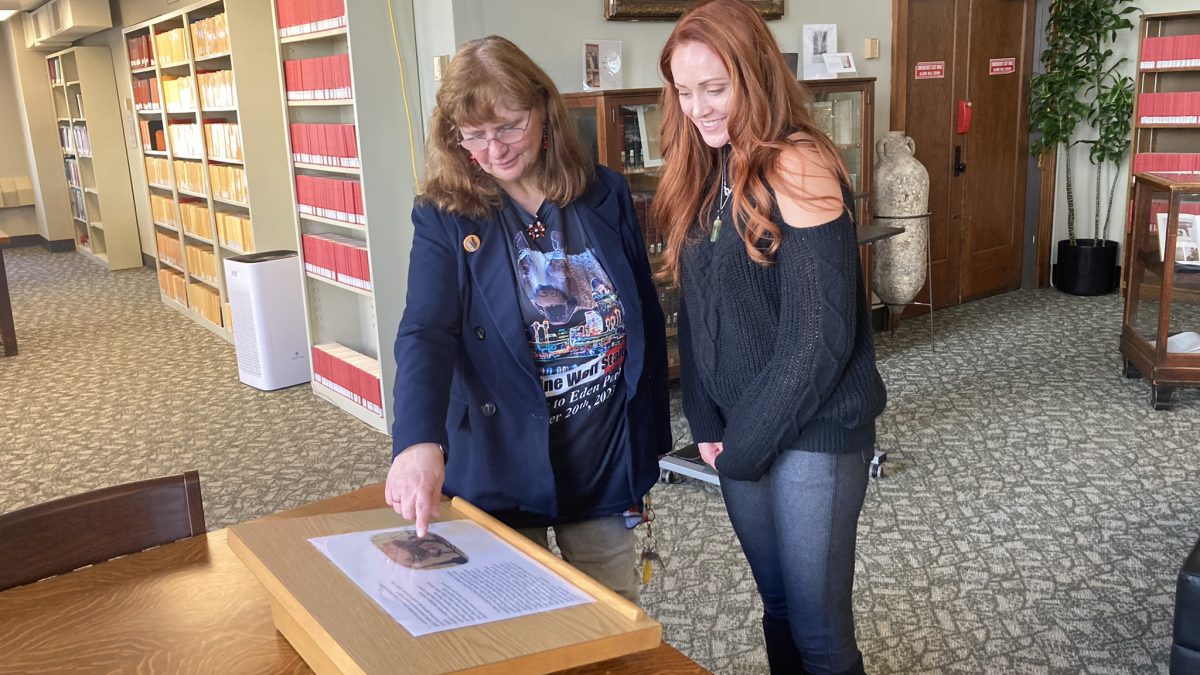
Admiring the “happy she-wolf,” a Roman mosaic from Aldborough in north Yorkshire dated to c. 300-400 CE, illustrating an excerpt in Latin and English translation of Ovid’s Fasti. “A she-wolf which had cast her whelps came, wondrous to tell, to the abandoned twins… She halted and fawned on the tender babes with her tail and licked into shape their two bodies with her tongue” (Ovid, Fasti II).
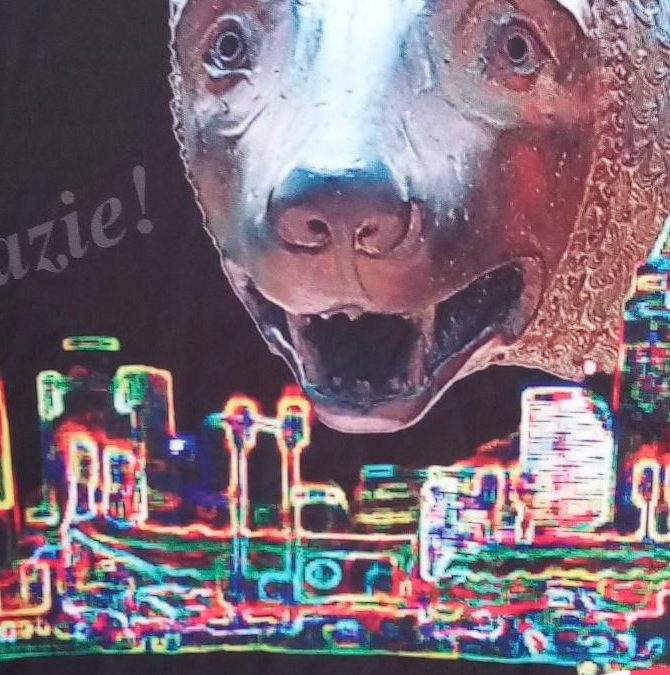
The beautiful t-shirt I am wearing in the previous photo was a gift from the United Italian Society of Greater Cincinnati and features the Wolf with the Cincinnati skyline.
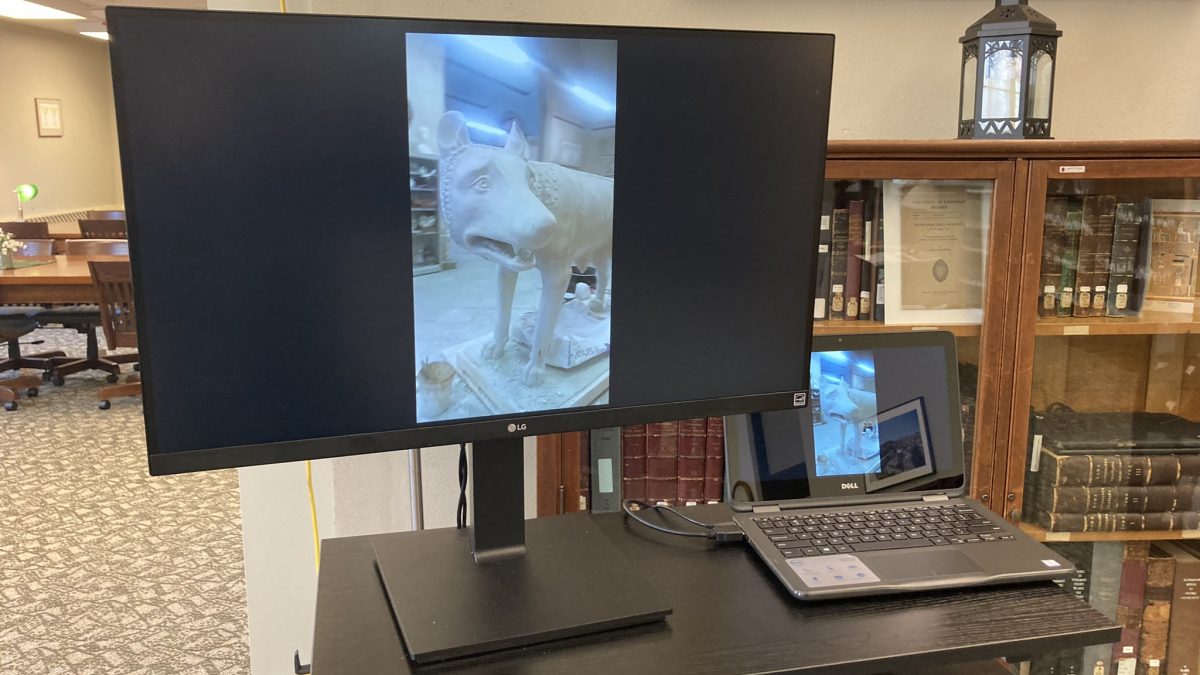
Video showing scenes from the Tuscan workshop of the melting of bronze including a paw of the original She-Wolf statue in Eden Park.
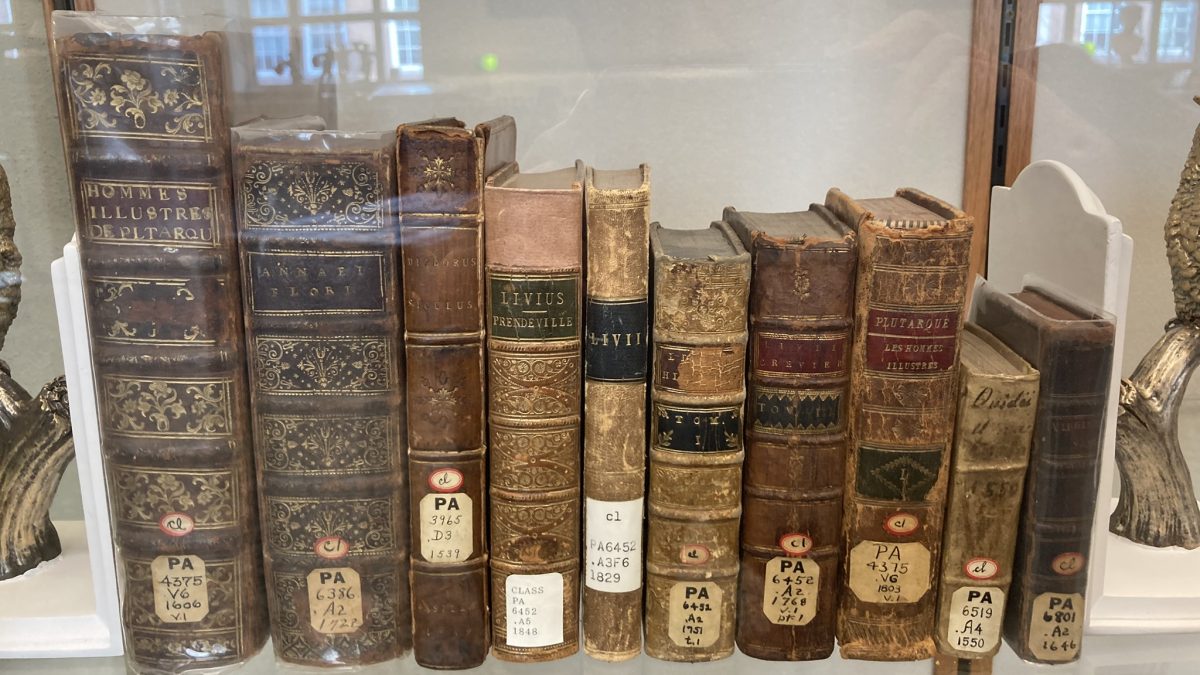
Livy, Virgil, Propertius, Cicero, Dionysius of Halicarnassus, Plutarch, and other authors narrating and allegorically referring to the story of Rome’s founding.
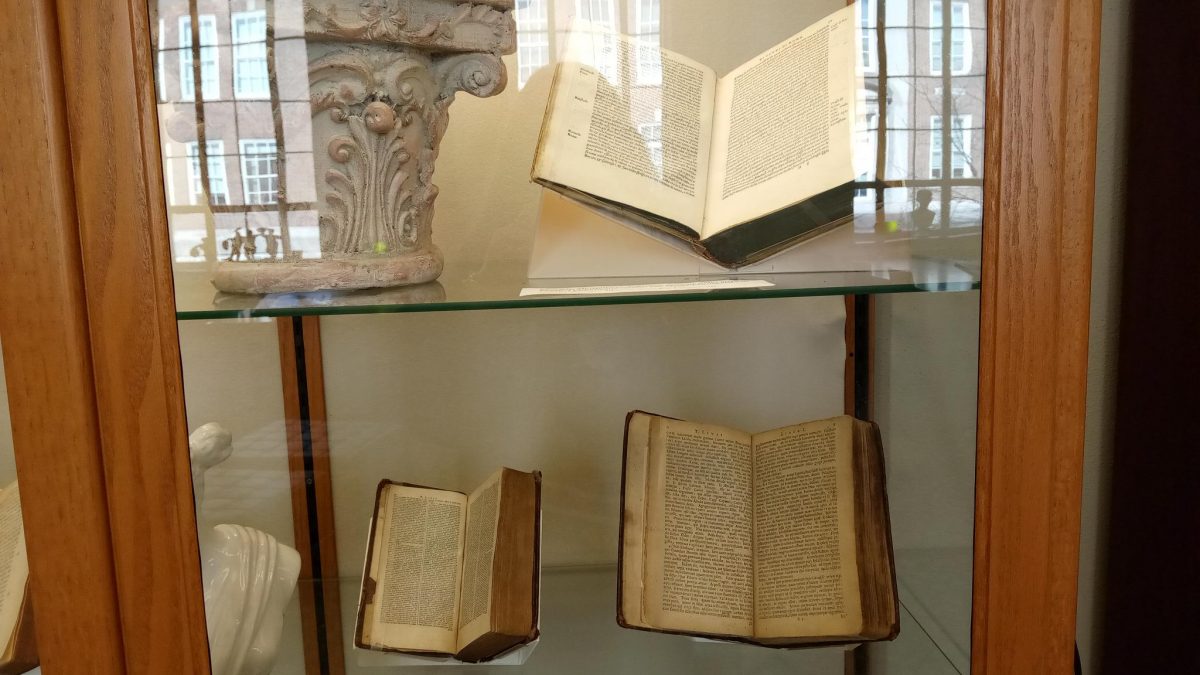
Dionysius of Halicarnassus, Venice 1545, Propertius, Venice 1515, Livy, Elzevir 1678.
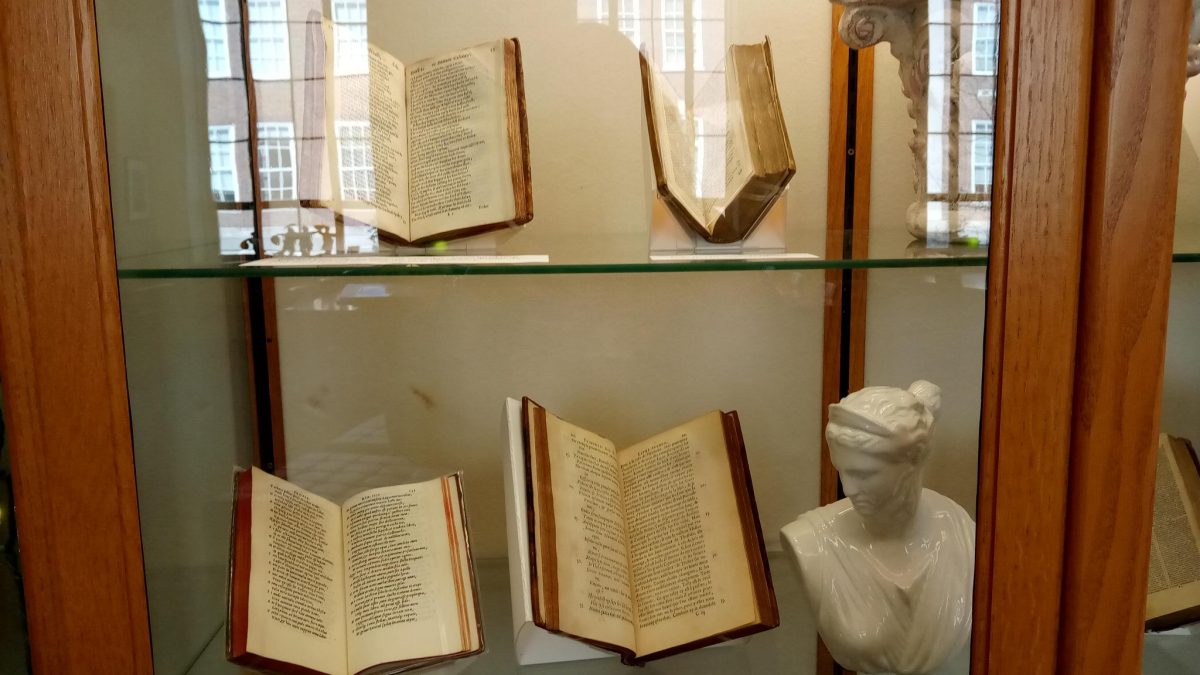
Ovid, Fasti, Elzevir 1661.
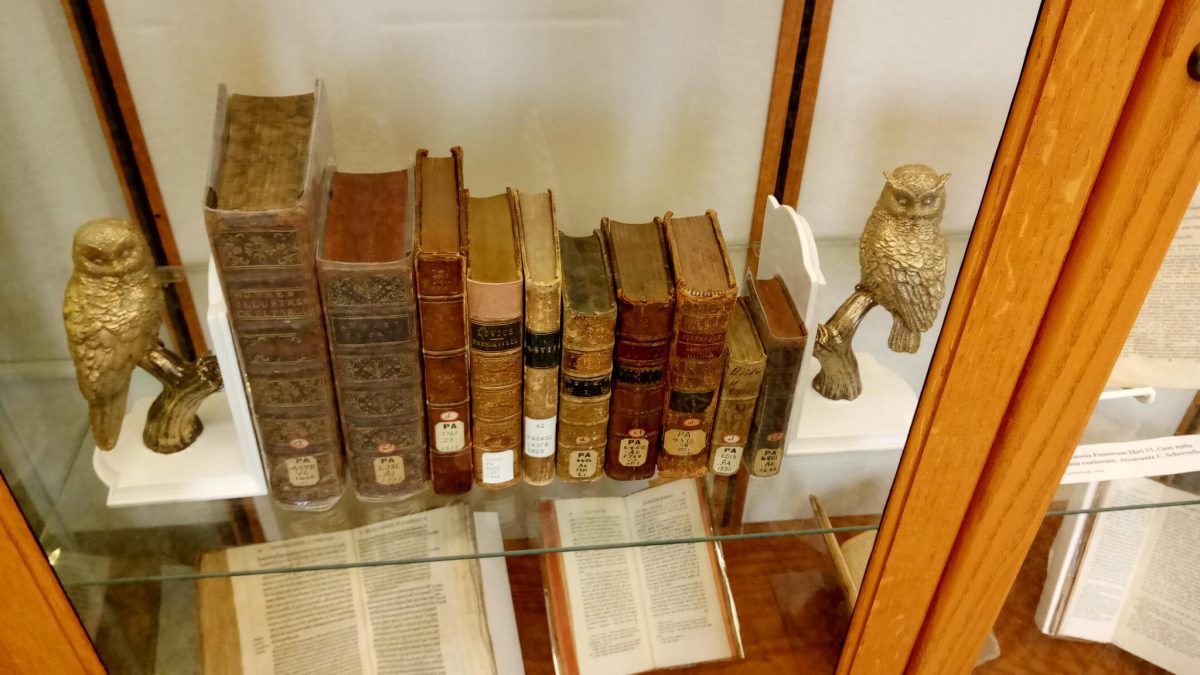
Cicero (In Catilinam III), Paris 1530; Plutarch (Lives, Romulus), Paris 1582.
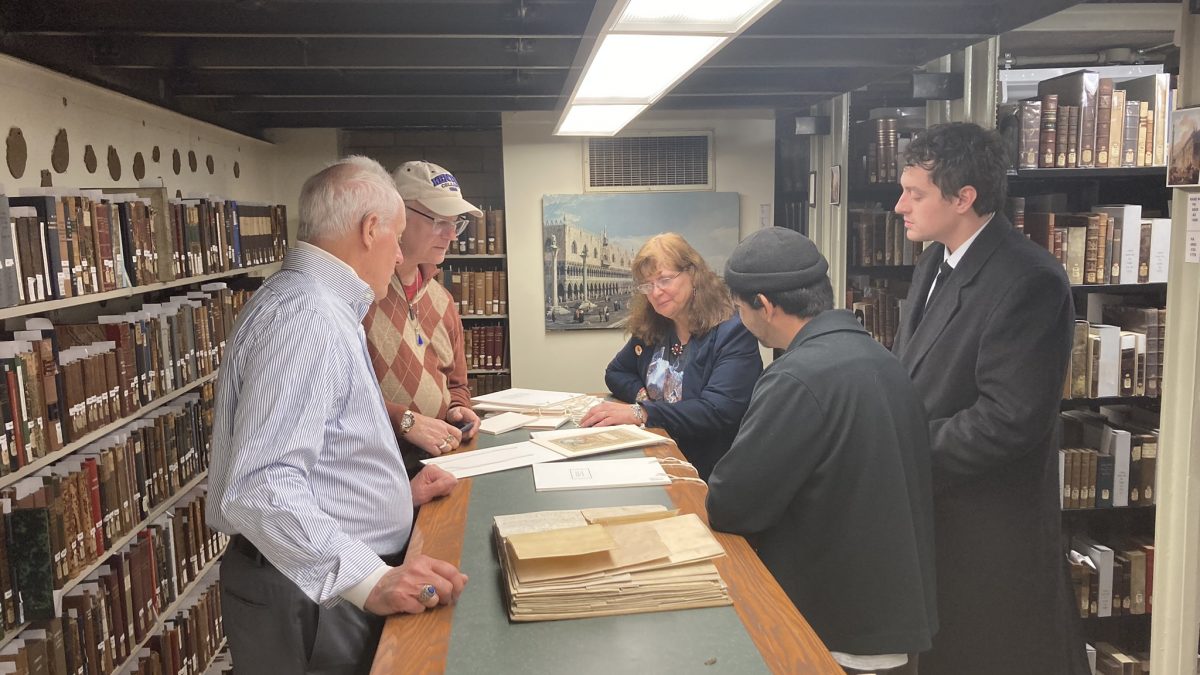
Some visitors were taken to the special collections room on S4 to view some of the library’s manuscripts, especially a 15th c. Choir Book, most likely from the Veneto area, and Venetian legal documents from the 14th to the 18th centuries.
